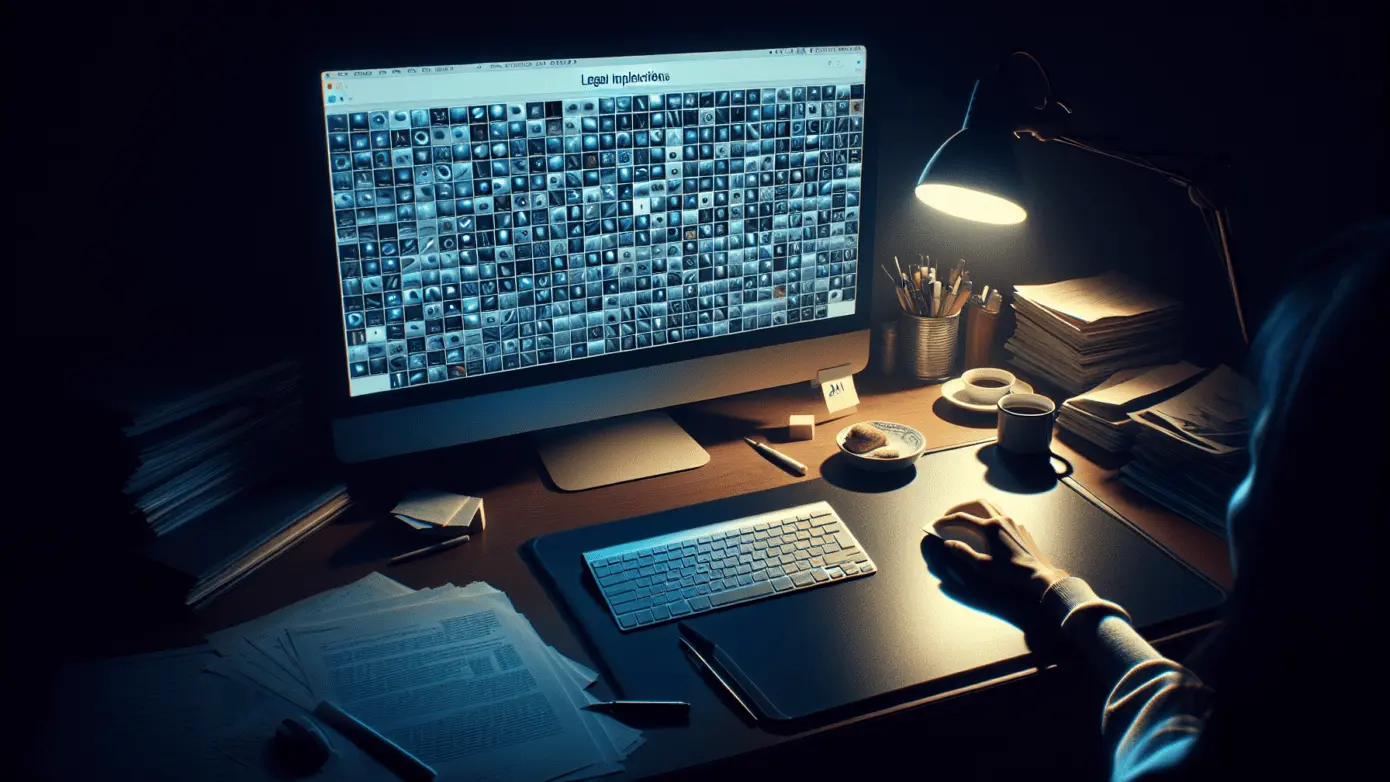Understanding AI-Generated Images
AI-generated images are becoming a hot topic in tech. AI, or Artificial Intelligence, can create images that look like photographs or paintings. These images are created by complex AI models that learn from a vast number of real images.
The creation process involves using a type of model called a Generative Adversarial Network (GAN). GANs have two parts, a generator and a discriminator. The generator makes new images. The discriminator tries to tell if these images are real or fake.
Through this process, the AI gets better at creating convincing images. This tech has many uses in art, research, and businesses. But, it also brings up many questions about copyright and ownership, which we will explore later. And don’t forget: these AI-generated images are unique. They come from AI learning and creativity, not from humans! So, when we talk about AI and images, we’re touching new ground in tech and law.
Practical Applications and Advantages of AI in Image Processing
Let me tell you how AI helps in understanding image search intent. The big win here is increasing the relevance of search results. It gets even better. It drastically boosts user experience too!
Now, onto the benefits of AI-driven image generation. AI does a nifty job in enhancing visual content. Say goodbye to boring, generic images! It also tailors user interaction. Want personalization? AI’s got your back!
And that’s not all. The use of AI in image processing offers profound benefits, and we’re just scratching the surface. As technology evolves, the possibilities are only bound to grow. Let’s fasten our seatbelts for an exciting future with AI-Generated images!
In the next section, we’ll dive deep into the legal aspects and digital rights related to AI-Generated Images. So, stick around!
Legal Aspects and Digital Rights in AI-Driven Image Generation
Let’s dive into the legal zone now; copyright is front and center. There’s a big question: who owns AI-created images? The answer is not so clear-cut. Some real-life examples might shed light on this cloud. Take Artur Brzozowski’s work. The law wasn’t sure where to place this virtual creation.
Now, we swim into the sea of privacy. Like the vast ocean, privacy rules change from each digital shore. These rules can steer the AI ship, so understanding them is key. They shape how AI spins an image out of personal data.
Lastly, we bridge the gap to Digital Rights Management (DRM). Is there a link between DRM and AI images? Of course! Our AI friends can be double-edged. They can aid DRM or can end up as pirates, crossing the digital property bounds. So you see, AI’s role in DRM is a two-way street.
Potential Misuses of AI-Generated Images
The world buzzes over AI generated images. Yet, they can be misused. Two ways stand out. First, deepfakes. I bet you’ve heard of them. They make life-like videos using AI. The danger? They can falsely place you or me in a video!
Next, our old foe, misinformation. AI images open a new lane for this menace. An innocent image, doctored by AI, can turn viral, spreading false info. Now, think about the legal impact.
The law faces a new frontier. Say, you’ve been defamed. The struggle will be on proof. Traditional ways may not work. It’s a nightmare, but not the only concern.
Privacy too takes a blow. AI can violate your privacy and go unseen. Tougher yet to punish. In short, the legal road looks rough ahead. AI holds promise, but our laws have to keep pace. The dual nature of AI images calls for swift action.
Governing AI-Generated Images: The Role of Laws and Regulations
The legal landscape for AI-generated images is not clear-cut. Current laws are trying to keep up. For instance, copyright laws in many regions do not yet take into account images generated by AI systems.
Experts suggest we need new laws or amendments to handle AI-generated images. These would deal with copyright, consent for using data, and clarifying legal liability.
The roles and responsibilities of those involved in AI are crucial. AI developers have a duty to build systems that respect laws, user rights, and public interest. Users of AI must use these systems responsibly, aware of the legal and ethical implications. Regulators, too, have a part to play. They have to create and enforce rules that ensure fairness while enabling innovation.
AI is groundbreaking. It is time our laws caught up. As we use AI to create and share images, we need rules that embrace this new reality.



Leave a Reply